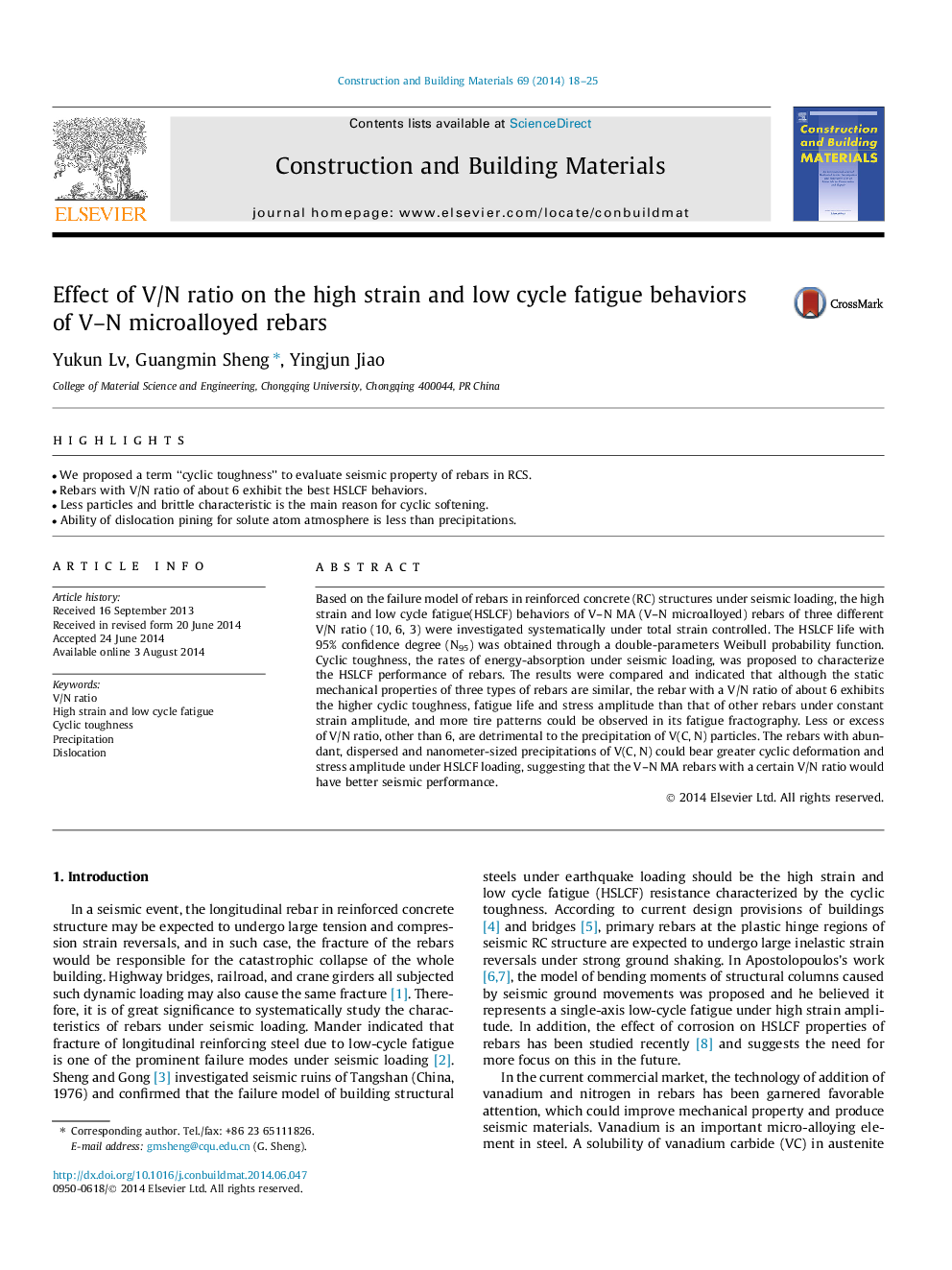| کد مقاله | کد نشریه | سال انتشار | مقاله انگلیسی | نسخه تمام متن |
|---|---|---|---|---|
| 257391 | 503586 | 2014 | 8 صفحه PDF | دانلود رایگان |

• We proposed a term “cyclic toughness” to evaluate seismic property of rebars in RCS.
• Rebars with V/N ratio of about 6 exhibit the best HSLCF behaviors.
• Less particles and brittle characteristic is the main reason for cyclic softening.
• Ability of dislocation pining for solute atom atmosphere is less than precipitations.
Based on the failure model of rebars in reinforced concrete (RC) structures under seismic loading, the high strain and low cycle fatigue(HSLCF) behaviors of V–N MA (V–N microalloyed) rebars of three different V/N ratio (10, 6, 3) were investigated systematically under total strain controlled. The HSLCF life with 95% confidence degree (N95) was obtained through a double-parameters Weibull probability function. Cyclic toughness, the rates of energy-absorption under seismic loading, was proposed to characterize the HSLCF performance of rebars. The results were compared and indicated that although the static mechanical properties of three types of rebars are similar, the rebar with a V/N ratio of about 6 exhibits the higher cyclic toughness, fatigue life and stress amplitude than that of other rebars under constant strain amplitude, and more tire patterns could be observed in its fatigue fractography. Less or excess of V/N ratio, other than 6, are detrimental to the precipitation of V(C, N) particles. The rebars with abundant, dispersed and nanometer-sized precipitations of V(C, N) could bear greater cyclic deformation and stress amplitude under HSLCF loading, suggesting that the V–N MA rebars with a certain V/N ratio would have better seismic performance.
Journal: Construction and Building Materials - Volume 69, 30 October 2014, Pages 18–25